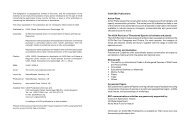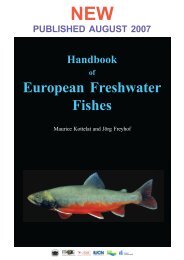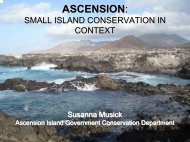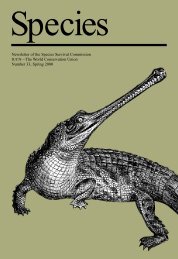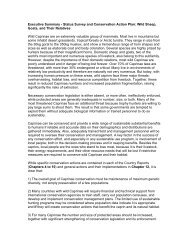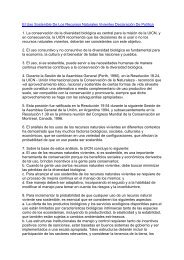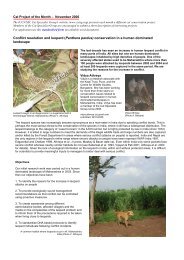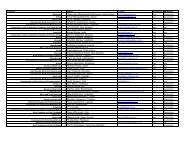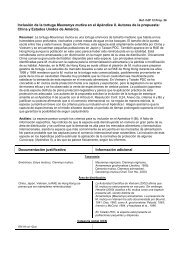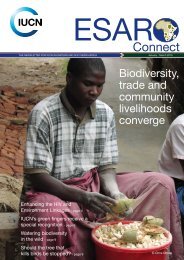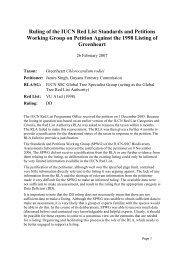Planning education to care for the earth - IUCN Knowledge Network
Planning education to care for the earth - IUCN Knowledge Network
Planning education to care for the earth - IUCN Knowledge Network
Create successful ePaper yourself
Turn your PDF publications into a flip-book with our unique Google optimized e-Paper software.
<strong>Planning</strong> <strong>education</strong> <strong>to</strong> <strong>care</strong> <strong>for</strong> <strong>the</strong> <strong>earth</strong>not with <strong>the</strong> idea of establishing development activities inside <strong>the</strong> park, butra<strong>the</strong>r of gaining public support through raising awareness of <strong>the</strong> value of <strong>the</strong>protected area.The programme was designed <strong>for</strong> students and later <strong>for</strong> <strong>the</strong> entire communitysurrounding <strong>the</strong> park and o<strong>the</strong>r areas where <strong>the</strong> black lion tamarin is found.Due <strong>to</strong> its rarity, <strong>the</strong> black lion tamarin became a charismatic symbol of <strong>the</strong><strong>education</strong> programme <strong>for</strong> <strong>the</strong> region. It generated public pride which makesit possible <strong>to</strong> try <strong>to</strong> protect <strong>the</strong> whole ecosystem where <strong>the</strong> primate is found.For <strong>the</strong> Black Lion Tamarin Programme a continuous evaluation procedurewas adopted <strong>to</strong> ensure effectiveness at each step from conception <strong>to</strong>completion. The PPP evaluation model (planning-process-product) was used,and <strong>the</strong> evolution of <strong>the</strong> project in <strong>the</strong>se three stages is described in thispaper.Programme Evaluation<strong>Planning</strong>•needs•community contacts•goals and objectives•target public•available resources(human and material)•institutional support•funding proposalsProgrammestructure and designProcess•methods•design &establishment ofactivities•strategies(pre-visit; onsite;post-visit)•staff training•administrationDecisions on changes& improvementsProduct•achievement of goals& objectives•expected results•unexpected results•using data <strong>for</strong>programme recycling•using data <strong>for</strong>programme support•publishing resultsRecycling DecisionsFigure 1. The PPP Model <strong>for</strong> Programme Evaluation. Modified <strong>for</strong>mJacobson (1991) and Padua & Jacobson (1993).<strong>Planning</strong>Needs, goals, objectives, <strong>the</strong> target public, constraints and availableresources were first defined. A preliminary survey showed that local peoplehad very little prior environmental knowledge. Interviews with teachers andcommunity leaders helped <strong>to</strong> assess <strong>the</strong> different contextual aspects.52



